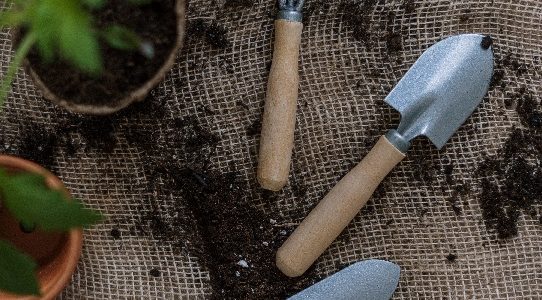Are you thinking about setting up a garden but have very limited space or a limited budget? Then this article is for you! Let me share some tips and tricks on how to create a garden even if money is tight and your space is small.
If you live in an apartment or a small house with a limited yard, you need to start by visualizing how to situate your plants so they don’t look too crowded. If indoor space is all you have, look for a “dead corner” inside your home that you don’t really utilize and transform it into something special.
If you’re outside and don’t really have much of a yard, then maybe you can come up with a spot for your plants on the stairs or near your door or window.
Check out inspiration on Pinterest boards to gather ideas and plan a certain look for your house and houseplants. Think of an arrangement that will be convenient for you when you start taking care of the plants that you’re bringing home. It’s nice to have a concept so that you know which direction you would like to go in with your gardening. You can even create a “theme” for each corner or spot. For example, place tropical plants near the window so you feel like you’re on a tropical island vacation whenever you look outside.
If money is tight, you can make use of things you have at home to serve as planters or containers for your plants. No need to buy special pots when you can recycle the stuff that’s been lying around your house. Here are some unique and creative ideas for plant containers:
1. Fish Tanks, Fish Bowls, or any Glassware
Why not make a Glass Garden? Re-use old fish bowls and fish tanks to make a cute terrarium that you can basically place anywhere without it taking up too much space. Glass gardens are ideal for those living in small spaces – they’re easy to set up, and very low-maintenance.
2. Milk Crates, Fruit / Vegetable Crates
These containers are great for growing herbs and vegetables. If you have several crates in your home, you can line them up and put different herbs in each crate or you can stack them up to make a vertical garden that can also serve as a unique provacy fence.
3. Wooden Pallets
You can create a raised bed garden using wooden pallets. You can also make a living accent wall by placing a wooden pallet in a wall, then incorporating hanging plants or herbs. Just make sure you select the right kind of wooden pallet because some of them are treated and can be very harmful to you and your plants.
4. Coffee Mugs (and other Ceramic Bowls)
Coffee mugs can also be used as planters and they are great for succulents and cacti. You can easily transfer a small plant into the cup (make sure that you drill a hole at the bottom for drainage), add a little bit of soil and fertilizer, then you’re done! Easy-peasy!
5. Gardening Tools
You can use old, dilapidated wagons, wheelbarrows and even watering cans as planters. Just like mugs, you would have to drill holes for proper drainage so you can prevent over-watering and root rot. Old gardening tools are perfect for flowering plants such as marigolds and daisies.
6. Metal Boxes and Metal Canisters
Time to review your toolboxes and rusty metal canisters and turn them into unique planters! If you don’t like the rustic feel then you can re-paint them for a pop of color. This can be an accent piece on your table or garden area.
7. Cinder Blocks and Concrete
Who would’ve thought that you can repurpose these as planters? They can be stacked just like Legos and are perfect for vertical gardening. Cinder blocks are unique because you can adjust for size depending on how you arrange them. They can easily fit in corners and other tight spaces. If you are looking into making a keyhole garden, cinder blocks are the way to go!
8. Baskets
I’m sure you are hiding some baskets around the house that you always thought you’d need to use again someday. The best baskets to use are thick and heavy-duty ones that are wide with a bit of depth to them, like laundry baskets and picnic baskets. As much as possible, stay away from baskets that are made from sea grass or any natural material because they might break down in time. Keep in mind that before using the basket as a planter, you should line it first (garbage bags or cloth works great) and put some holes in it for drainage.
To Sum Things Up:
To be honest, there are a lot of other things you can find in your home that you can use as a planter. The list goes on and on. You just need to think creatively and the possibilities are endless! As Cathy James said in her book The Garden Classroom:
“Your garden, no matter its size, is an outdoor classroom waiting to be explored.”
Start your exploration now! 🙂
-Mel

